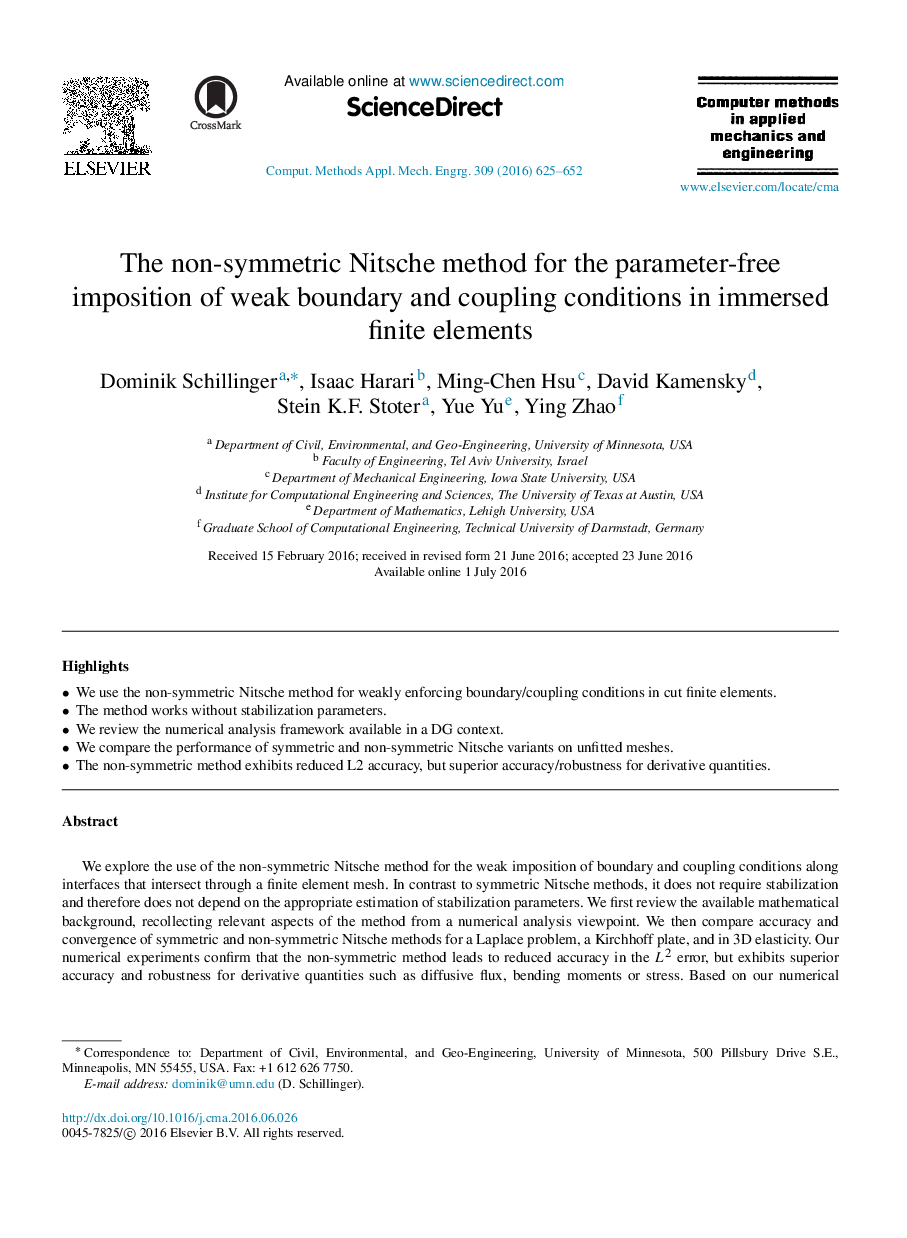| Article ID | Journal | Published Year | Pages | File Type |
|---|---|---|---|---|
| 6915922 | Computer Methods in Applied Mechanics and Engineering | 2016 | 28 Pages |
Abstract
We explore the use of the non-symmetric Nitsche method for the weak imposition of boundary and coupling conditions along interfaces that intersect through a finite element mesh. In contrast to symmetric Nitsche methods, it does not require stabilization and therefore does not depend on the appropriate estimation of stabilization parameters. We first review the available mathematical background, recollecting relevant aspects of the method from a numerical analysis viewpoint. We then compare accuracy and convergence of symmetric and non-symmetric Nitsche methods for a Laplace problem, a Kirchhoff plate, and in 3D elasticity. Our numerical experiments confirm that the non-symmetric method leads to reduced accuracy in the L2 error, but exhibits superior accuracy and robustness for derivative quantities such as diffusive flux, bending moments or stress. Based on our numerical evidence, the non-symmetric Nitsche method is a viable alternative for problems with diffusion-type operators, in particular when the accuracy of derivative quantities is of primary interest.
Related Topics
Physical Sciences and Engineering
Computer Science
Computer Science Applications
Authors
Dominik Schillinger, Isaac Harari, Ming-Chen Hsu, David Kamensky, Stein K.F. Stoter, Yue Yu, Ying Zhao,
